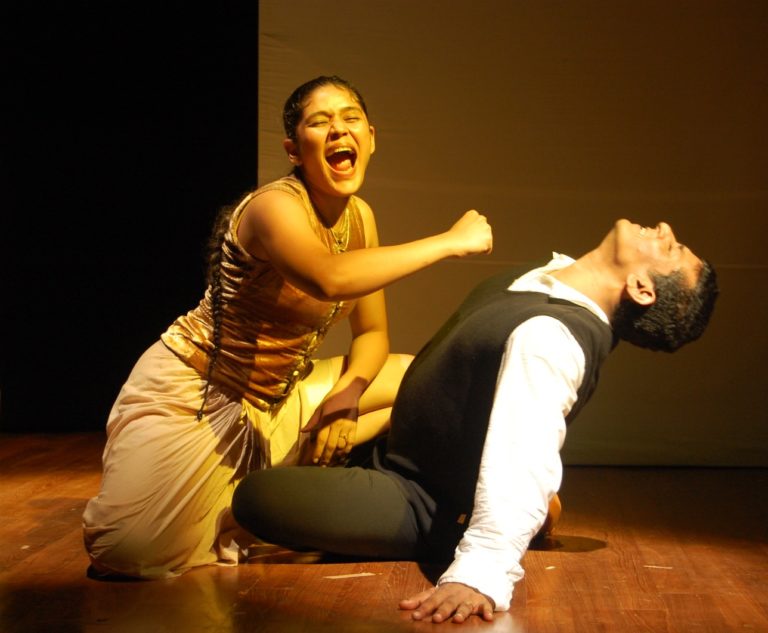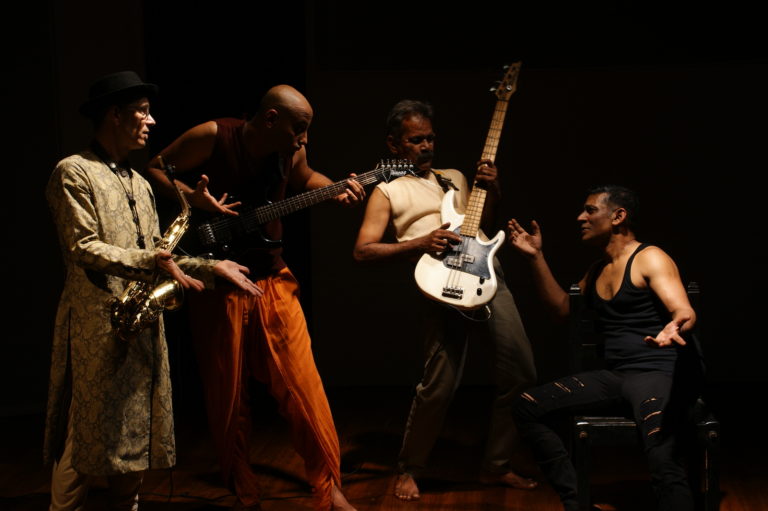

Adishakti’s The Hare and the Tortoise is a dramatic meditation on the ethical possibilities inherent in the notion of contemporaneity. All too often our lives are over-determined either by the past or by the future, by the strictures of radition, on the one hand, and of progress, on the other. In this battle between the condition of nostalgia and the desire for achievement, the present is forgotten or, worse, left unthought and unconsidered. Yet it may be the case that it is only in the recurring stillness of the present, of the moment, of what is now, that we can encounter ourselves as we truly are, untrammeled by the burdens of the past or the distorting pressures of the future. So too, it may well only be in the stark integrity of the present time – when we are not concerned about falling behind or getting ahead that our relationships with others achieve a new equity and companionability. Thus, being contemporary, of the time, is linked to the notion of being coeval, of the same time, or, thence, of being together in the same time, or, of keeping time together, and so on. So too, being of the present carries within itself a kin set of etymological resonances, in this case, of being present to both oneself and to others.
The Hare and the Tortoise develops its case for the importance of being contemporary through two devices. First, it explores the complex ways in which we occupy time by staging a dramatic colloquium between participants in notable inter-civilisational race- fables. The Hare and the Tortoise are the archetypal competitors who represent different ways of understanding temporality. Their race becomes the cover story for a theme, which includes other competing pairs such as Ganapati and Kartik, Ekalavya and Arjuna, Arjuna and Hamlet. Second, to help these fabulistic discussants the better to focus their arguments the play invites them all to comment upon the crisis experienced by William Shakespeare’s Hamlet; that dramatic protagonist for whom time was always so painfully out of joint.
This play was inspired by an essay written by Nolini Kanta Gupta called ‘Hamlet: A Crises of The Evolving Soul’ which touches on the similarities and difference between Arjuna and Hamlet. The production attributes the difference to different ways of knowing. Formely the production rejects a linear narrative structure. It conveys significance through a synaesthesis of different arts- the word, the gesture, the image, the sound- each of which communicate sovereignly in their unique way.
Cast and Credits
Performers:
Hamlet: Vinay Kumar
Eklavya & Arjuna: Nimmy Raphel
The Hare: Arvind Rane
The Tortoise: Arjun Shankar
Ganapati: Suresh Kaliyath
Musicians:
Saxophone, Clarinet: Pascal Sieger
Percussion: Suresh Kaliyath
Guitar: Arjun Shankar
Bass Guitar: Arvind Rane
Music Composer: Pascal Sieger
Sets: Arjun Shankar, Vinay Kumar
Costumes: Uma, Upasana, Auroville
Puppets: L Rajappa, Nimmy Raphel
Light Designer: Vinay Kumar
Light Operation: Anoop Davis
Playwright & Director: Veenapani Chawla
Acknowledgements: The India Foundation for the Arts supported this production through its New Performance Grant.
Having performed at various festivals, conferences and workshops, we cater to different audiences who would like to enjoy and explore modern Indian theatre. Our performances are enjoyed by audiences across all age groups.
To know more about the productions currently available for performance booking, please contact us.
Get in Touch© Copyright 2019 Adishakti. All rights reserved.